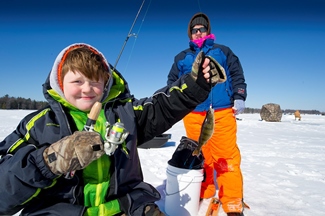Mexican Poachers Interdicted by USCG Off Texas Coast


CORPUS CHRISTI, Texas — The Coast Guard interdicted one Mexican fishing vessel, Friday, after observing the vessel’s crewmembers poaching in U.S. waters.
At approximately 12:00 p.m., while on a routine patrol, an Air Station Corpus Christi aircrew aboard an MH-65 Dolphin helicopter spotted a lancha north of the United States – Mexico maritime border and offshore of South Padre Island. When sighted by the helicopter the lancha fled. The helicopter crew then notified the Sector Corpus Christi Command Center and commenced pursuit of the lancha.
Watchstanders at Coast Guard Sector Corpus Christi Command diverted a crew aboard a Station South Padre Island 33-foot law enforcement boat to interdict the lancha. The Dolphin helicopter aircrew vectored in the law enforcement boat as the lancha fled toward the border. After a more than 30-minute pursuit, the lancha crew was stopped 10 miles into Mexico’s Exclusive Economic Zone. There were no injuries or damage to either the lancha or the pursuit boat after the pursuit in 4-5 foot seas. The four Mexican nationals aboard admitted to fishing illegally in U.S. waters and had 12 red snapper, 2 nurse sharks and 1 grouper totaling 150 pounds aboard their lancha. Read more







 For beginning anglers, ice fishing offers one significant advantage: access. Boat-less anglers, who otherwise are limited to shorelines or fishing piers much of the year, can often access entire lakes. That inspires some anglers to proclaim that ice-fishing season is their favorite time of year.
For beginning anglers, ice fishing offers one significant advantage: access. Boat-less anglers, who otherwise are limited to shorelines or fishing piers much of the year, can often access entire lakes. That inspires some anglers to proclaim that ice-fishing season is their favorite time of year. TOLEDO, OH – Mark Feldstein & Associates Inc. (MFA), a product development company and importer of unique giftware, housewares and electronics, recently introduced the Illuminator Camo Flashlight with licensed Mossy Oak® camouflage patterns designed for outdoor sports and recreation.
TOLEDO, OH – Mark Feldstein & Associates Inc. (MFA), a product development company and importer of unique giftware, housewares and electronics, recently introduced the Illuminator Camo Flashlight with licensed Mossy Oak® camouflage patterns designed for outdoor sports and recreation.